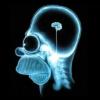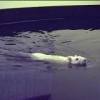http://uanews.org/st...rain-ultrasound
In a followup study of ultrasound on UA psychology student volunteers, recording vital signs such as heart rate and breath rate, and narrowed down the optimum treatment to 2 megahertz for 30 seconds as the most likely to produce a positive mood change in patients.
"With 2 megahertz those who were stimulated with ultrasound reported feeling 'lighter,' or 'happier;' a little more attentive, a little more focused and a general increase in well-being," Sanguinetti said.
Allen and Sanguinetti then began a double blind clinical trial to verify the statistical significance of their findings and to rule out any possibility of a placebo effect in their patients.
A special thanks to lostfalco for giving a link for this reasonably priced device.
https://www.medexsup..._pid-23546.html
I am not going to buy it right now, due to money issues, but most importantly to give TULIP at least two months, without much else except possibly the CILTEP stack the days I am not using the LEDs.
If anyone is thinking to buy it, as of now (from researching online, TUS, seems to be safe). There are experiences from people using much more than the 2 megahertz recommended in the study, with no serious ill effects, and also there are commercial ultrasound face massagers at 2 megahertz, on sale for quite some time now.
A possible place to start using TUS would be the Reticular Activating System.
If anyones tries activating RAS (or any brain part for that matter) please start at even less time than the 30 seconds recommended in the above study.
A simple diagram for RAS activation with ultrasound, Check FIG. 1A , 130, 140
http://www.google.co...s/US20110208094
FIG. 1A shows sagittal view of brain highlighting the Reticular Activating System 130 including skull 100 with cerebrum 110along with cerebellum 120. FIG. 1B again shows the Reticular Activating System 130 including skull 100 with cerebrum 110along with cerebellum 120, but this time with ultrasound transducer 140 approximately aligned along the axis of the Reticular Activating System and placed against the neck. The ultrasound transducer 140 does not cover the entire length of the Reticular Activating System (RAS) first because the upper part of the is not physically accessible (although the top of the outline 130 is the midbrain which is outside the RAS) and second because the ultrasound field can be steered to a point above the top of the ultrasound transducer 140. In another embodiment, the ultrasound transducer is perturbed laterally, up and down, and/or in and out causing enhanced change in the target neural tissue.
Edited by Mind, 22 April 2015 - 05:36 PM.



























































